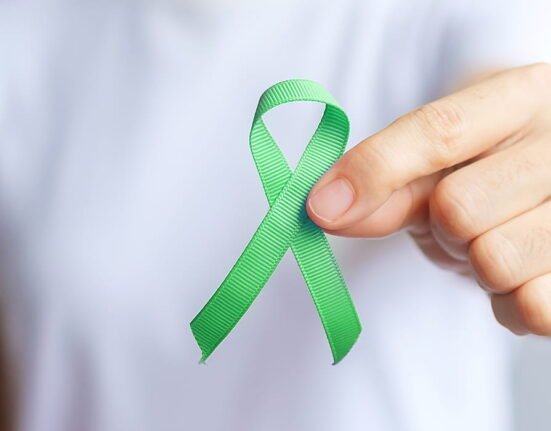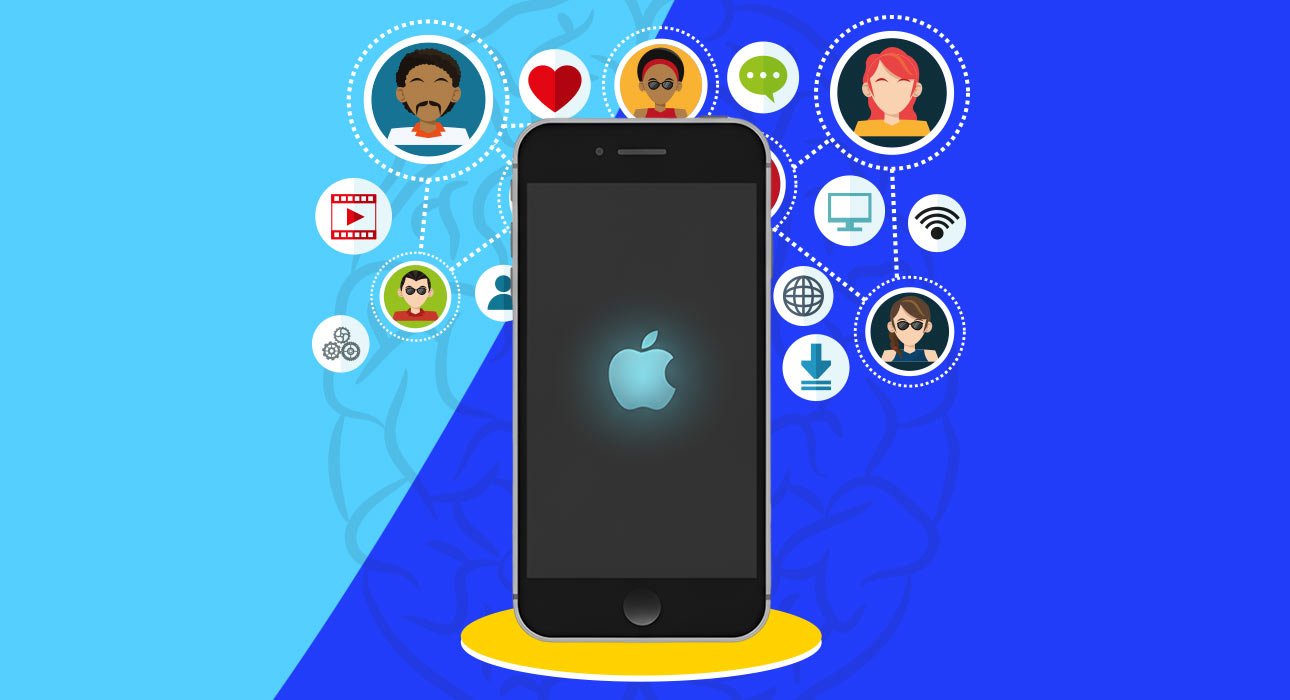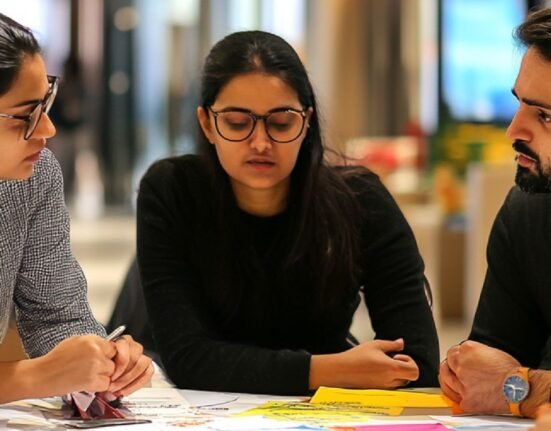A few years ago, the ultimate status symbol was to have a Rolex watch, a nice car, or simply being able to pronounce the word “quinoa” out loud without shuddering. Owning an iPhone isn’t just about having a phone. It is about joining a club, a club so powerful that it makes Android users question their life choices every time a group chat turns green. Welcome to the modern temple of belonging, where membership comes with a lightning cable, no headphone jack, and the feeling that you’ve “made it,” even if your bank account is currently screaming for help.
The Bite Religion
Come on: Apple doesn’t sell phones. It sells religion. That is the reason why Apple enthusiasts stand hours in advance of store opening hours with folding chairs and chips at hand. It’s not desperation, it’s devotion. They are not consumers; they are disciples. The Apple why Apple logo itself has become a halo of social identity. Flash it at a café, and baristas automatically assume you’re creative, successful, and probably editing your next viral video. Walk in with a cracked-screen Android, and suddenly, you’re invisible, just another mortal in a world of digital gods.
Actually, the iPhone alone makes you a level-up personality. You may have been an ordinary human being the other day, but purchase an iPhone 15 today, and ta-da! Now you are a “content creator,” “digital nomad,” or “brand strategist.” Abracadabra!
Read More: Social Media’s Role in Redefining Personal and Societal Values
The Green Bubble Apocalypse
If you’ve ever been chatting with someone with an iPhone on Android, then you know the agony of the humiliation of the green bubble. Apple did not produce a phone; it produced social pressure in RGB. Blue bubbles inside the class iPhone universe are like “you are in.”
Green bubbles? You can say, “Hey, I am a time traveller from 2011.” The shift in such colours has destroyed relationships, office politics, and at least 80% of teenagers in global-wide. It’s so bad that now people are matching based on not their zodiac sign, but their operating system. “Are you a Gemini?” “No, worse. I am Android.” “Ew.” This isn’t a conversation; this is a digital caste system. The iPhone united us, not—it taught us how not to unite.
How to Purchase Coolness in 12 Convenient Payments
Apple understands we’re susceptible: we don’t purchase things because we need them—we purchase things so we’ll be noticed. And what’s more mundane than holding the new iPhone properly for your mirror photo? To all of us, an iPhone is less about batteries and features (come on, it drains faster than our need to arrive at the office on Monday morning). It’s about membership shopping on an instinctual level that tells the story of, “I belong.” There are no hip ads involving phones; there are hip groups, hip, cool people smiling at sunset, as if AirDrop were an antidote for loneliness.
Apple got the emotional math correct. Belonging + Beauty + A dash of Insecurity = Cash. They’re not explaining to you what the phone can do, but explaining to you who you are when you possess one. And come on, who won’t need to be part of the world of film-quality divine light, minimalist lines, and hair just gorgeous?
iTribe and the Fear of Exclusion
That is what sociologists refer to as social inclusion. Lifestyle branding, to marketers. The rest of us refer to it as peer pressure in a nice box. When you buy an iPhone, you’re not buying a thing—you’re buying a club membership card to iTribe: the AirPod world, the iMessages, and the people who speak your language, the blink of understanding when you utter the word “ecosystem.” You belong to an in-group secret handshake club that only works if you buy all the rest of the Apple stuff.
Laptop? That’ll be a MacBook. Watch? Apple Watch. Tablet? Of course, an iPad. Refrigerator? Any moment now, most likely. Brand land is rather like quicksand. You buy one product, and before you can yell Jack Robinson, you’re knee deep in white chargers and modestly above the rest of humanity. But at a price: membership has its price. You pay in cash, naturally, but with addiction as well. You can’t just log off when you’re logged on. You can switch to Android, say, but can you possibly flourish as a green bubble again?
How Apple Became a Mirror
Philosophically (yes, we’re getting serious now), the iPhone isn’t a product so much as it’s a mirror. It’s a statement of what we require: permission, to belong, and know that we count. Each alarm is a standing ovation. Each selfie is a witness that we are alive. Each “seen at 10:05” is an ants-in-the-pants drama. And since our phone accompanies us everywhere, they’re now who we are. We’ve inadvertently equated ourselves with a glass and metal thing. The iPhone doesn’t only contain our photos—it contains our value as a social being. We’d look in the mirror and ask, “Who am I?” Now we find ourselves asking, “Why isn’t my iCloud syncing?”
Apple’s Greatest Product Insecurity
If you think of Apple as a hardware company, rethink. Its greatest product is anticipation. The corporation has mastered the art of leaving you with the impression that your phone is older than the hills the moment Tim Cook has said his piece. Apple introduces something “revolutionary” year in and year out: a colour, a slightly improved camera, or a button no one wanted. And people gasp as though they have just breathed oxygen. “I want it,” you gasp, while your own phone in your palm still functions.
This is not consumerism. It’s FOMO Fear of Missing Out psychological manipulation in brushed aluminium packaging. Apple benefits from the Fear of Missing Out. You notice other individuals walking around with the latest model, and your ego starts to swell. You are not buying a phone; you are buying approval that you’re up to date.
The Great Divide: Team Apple vs. The Rest
Today, the iPhone is an identity. It’s a class and having a phone. iPhone people are going to be arriving at parties—taking Portrait Mode selfies as their Android buddies sit there awkwardly, taking photos that look like they’ve been taken through a potato. At work, wearing AirPods is a signal that you’re presently in the midst of talking. At coffeehouses, resting your iPhone beside your latte is a badge of being: “I am here.” Apple did not produce a product; Apple created an exclusionary culture masquerading as innovation. It’s high school again, and now the cool kids magnetically charge phones with MagSafe.
The Irony of Connection
Ironically, technology that has been designed to bring us together has also been utilised to drive us apart. We text and don’t talk so much. We discourse about connection as we scroll ourselves alone in our bedrooms. We measure popularity by likes, not laughs. But we can’t leave it behind because in cyberspace, signing off means being invisible.
iPhone is no longer a gadget; it’s oxygen to us. We choke up in silence without it. So, naturally, we mock Apple prices, we complain about the charger fiasco, but we wait in line like a rock concert when one of the new models comes out. Because ultimately, we don’t want to be on the outside looking in on something, even if it’s fake.
Read More: Understanding Technology’s Impact on Mental Health
A Brief History of Buying Belongings
Let’s look back. “Bought belonging” is nothing new. We’ve been purchasing tokens of belonging, bling, designer clothing, and vehicles in years gone by. The iPhone is simply the latest iteration of social security. But better. Instead of a logo on your chest, you’ve got one in your pocket that keeps you in contact with your group 24/7. When Apple says, “Think Different,” what it really means is, “Buy the same thing as everyone else, but feel superior doing it.” The iPhone isn’t just an accessory; it’s a passport to a collective identity. And like all passports, it comes with borders. You’re either in or out.
Conclusion: The Gospel According to Apple
So where does that leave us? We live in a world where belonging can be downloaded, where self-worth can be upgraded, and where happiness is measured in pixels. The iPhone may be our ticket to social inclusion, but it’s also a reminder that we’ve started renting our identities from corporations. But love it despite all, we must. The camera is great, the memes are epic-tastic, and let’s be honest—it’s the only way we’re decent-lookin’ in the mirror.
Maybe that’s okay. Maybe belongingness has always had a bit of a transactional feel. People have long paid to belong by buying royal finery, club membership, or, now, the new phone case that’s more than dinner. This is something to take with you, though: Authentic belonging has no relation to a Lightning port or Face ID. Self-worth will not be AirDropped. Friendship won’t download.
And you can’t really buy bona fides on the App Store (though I’m sure Apple is busy working on that). In the meantime, though, we are buying membership phone to phone, laughing at green bubbles, synchronising our very being with the cloud, and hoping someday, maybe our upgrade will finally make us whole.
FAQs
1. For what reason do people choose iPhones based on social fit?
Since iPhones represent contemporary style, identity, and tech solidarity. Owning one is akin to belonging to a worldwide group that values creativity and superior design.
2. Is Android truly that bad?
No! Androids are fantastic—just ignored by society. Sadly, peer snobbery and marketing have made Apple the “status default.”
3. Are social interactions enhanced by iPhones?
They might, but only when they’re conscious. If not, they will substitute screen dependency for genuine interaction.
4. How does Apple foster a sense of loyalty?
By using clean design, emotional branding, and ecosystem entrapment, it becomes easier to stay than to go.
5. What is the actual lesson?
The most profound connections are not visible on the screen.













Leave feedback about this